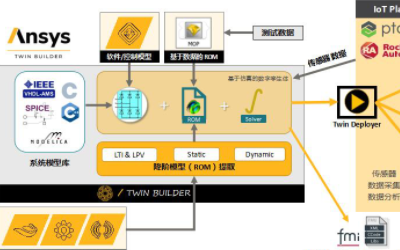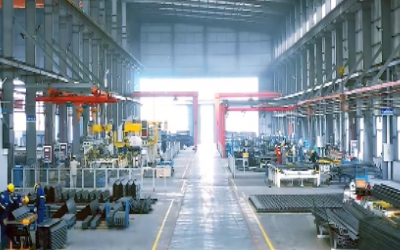Miner innovating for competitive edge
ChinaCoal Pingshuo Group Co Ltd, one of China's top coal producers, is using new technologies to advance its coal-to-nitramine conversion procedures, in line with the rising trend of environmentally friendly industrial production.
The new technologies include procedures like pressurized liquefaction, cooling, and low-temperature methanol washing. Coal that is less suitable for power generation will be converted to porous nitramine particles, which are now a major by-product produced by the group.
Every metric ton of coal, that is less suited for power generation and valued at 230 yuan ($34), can be converted into by-products valued at 840 yuan. And their output now is nearly four times of that in the past, said Hu Wanlin, a Chinacoal executive.
"Developing new products and reserving natural resources are essential for companies like us that are highly reliant on nonrenewable resources, in order to achieve sustainable development," said Wang Xiangsheng, executive director of ChinaCoal, which is located in the northern part of Shanxi province in North China.
The development of the coal-to-nitramine conversion process has come at a time when China's major coal producers are seeking product renovation and structural change, as the Fourth Industrial Revolution, a transformation powered by technology innovation, is already impacting the industry.
"Many major State-owned enterprises in the coal sector are developing technologies and seeking new business models to produce and sell coal chemicals, to strongly support their major businesses like coal production," said Wu Lixin, deputy director of the Coal Strategic Planning Research Institute under the aegis of the China Coal Research Institute.
According to Wu, as coal mining goes deeper, many coal varieties are found to have high sulfur content, which makes coal products less suitable for power generation. Therefore, they lose market competitiveness.
"In such circumstances, many major State-owned companies are adapting technology innovation to guarantee top quality of coal products, while some are seeking to develop by-products like sulfur-related products and nitramine products. Some are integrating both," Wu said. "So far, the methods have proved to be efficient in generating more business growth."
The coal-to-nitramine conversion, according to Wang, also benefits the group in reducing production costs. The group now needs 100,000 tons of nitramine each year for explosions, an important part in coal mining and manufacturing. "We are also ramping up the efforts to reduce emissions for environmental protection," Wang said.
So far, ChinaCoal's conversion rate of coals has reached over 95 percent, and is able to produce over 10 kinds of by-products. It has three sets of coal-to-nitraminee equipment that can produce 400,000 tons of nitramine and 114 million standard cubic meters of liquidized gas a year.
The group, formerly known as Pingshuo Coal Industry Co, was established in 1982 for the development of Antaibao mine, a China-US coproduction coal plant. It was incorporated into China National Coal Group Corp in 1997.
In 2008, China National Coal Group Corp developed a branch in Pingshuo for its management of listed assets, after being granted approval for listing in 2006. The branch was developed together with Pingshuo Coal Industry Co that operated concurrently for management of unlisted assets.
Every metric ton of coal, that is less suited for power generation and valued at 230 yuan ($34), can be converted into by-products valued at 840 yuan. And their output now is nearly four times of that in the past, said Hu Wanlin, a Chinacoal executive.
"Developing new products and reserving natural resources are essential for companies like us that are highly reliant on nonrenewable resources, in order to achieve sustainable development," said Wang Xiangsheng, executive director of ChinaCoal, which is located in the northern part of Shanxi province in North China.
The development of the coal-to-nitramine conversion process has come at a time when China's major coal producers are seeking product renovation and structural change, as the Fourth Industrial Revolution, a transformation powered by technology innovation, is already impacting the industry.
"Many major State-owned enterprises in the coal sector are developing technologies and seeking new business models to produce and sell coal chemicals, to strongly support their major businesses like coal production," said Wu Lixin, deputy director of the Coal Strategic Planning Research Institute under the aegis of the China Coal Research Institute.
According to Wu, as coal mining goes deeper, many coal varieties are found to have high sulfur content, which makes coal products less suitable for power generation. Therefore, they lose market competitiveness.
"In such circumstances, many major State-owned companies are adapting technology innovation to guarantee top quality of coal products, while some are seeking to develop by-products like sulfur-related products and nitramine products. Some are integrating both," Wu said. "So far, the methods have proved to be efficient in generating more business growth."
The coal-to-nitramine conversion, according to Wang, also benefits the group in reducing production costs. The group now needs 100,000 tons of nitramine each year for explosions, an important part in coal mining and manufacturing. "We are also ramping up the efforts to reduce emissions for environmental protection," Wang said.
So far, ChinaCoal's conversion rate of coals has reached over 95 percent, and is able to produce over 10 kinds of by-products. It has three sets of coal-to-nitraminee equipment that can produce 400,000 tons of nitramine and 114 million standard cubic meters of liquidized gas a year.
The group, formerly known as Pingshuo Coal Industry Co, was established in 1982 for the development of Antaibao mine, a China-US coproduction coal plant. It was incorporated into China National Coal Group Corp in 1997.
In 2008, China National Coal Group Corp developed a branch in Pingshuo for its management of listed assets, after being granted approval for listing in 2006. The branch was developed together with Pingshuo Coal Industry Co that operated concurrently for management of unlisted assets.








